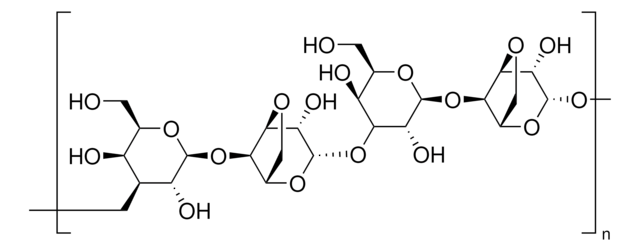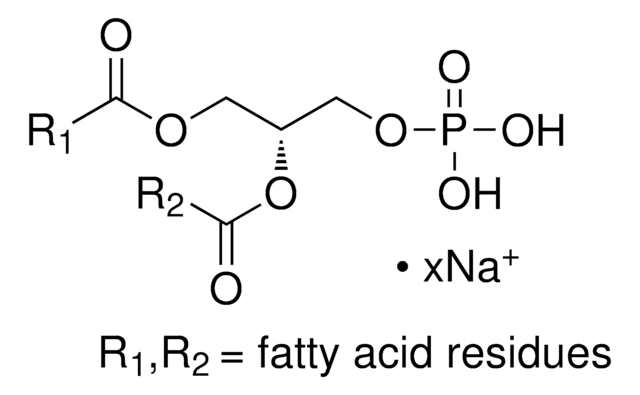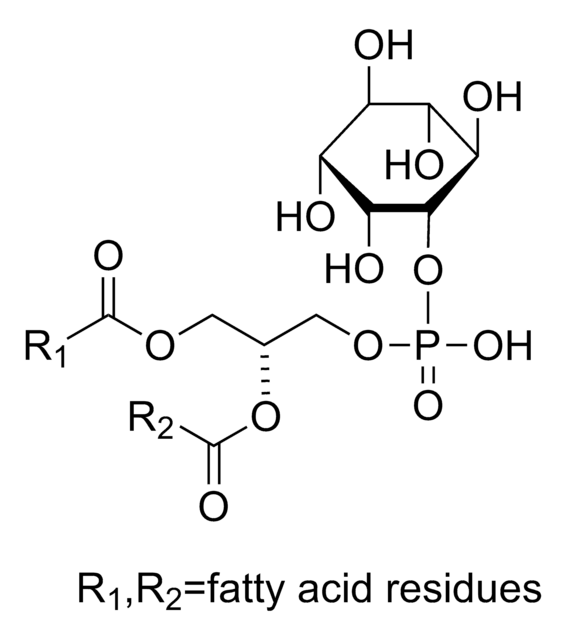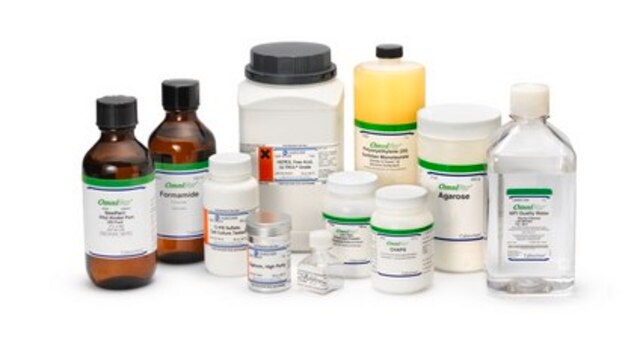Kluczowe dokumenty
A9045
Agarose, low gelling temperature
BioReagent, suitable for cell culture, suitable for insect cell culture, suitable for plant cell culture
Synonim(y):
2-Hydroxyethyl agarose
About This Item
Polecane produkty
linia produktu
BioReagent
Formularz
powder
metody
cell culture | insect: suitable
cell culture | mammalian: suitable
cell culture | plant: suitable
EEO
≤0.1
mp
≤65 °C ( at a 1.5% gel)
temp. przejścia
congealing temperature 26-30 °C
siła żelu
≥200 g/cm2 (1% gel)
ślady anionów
sulfate (SO42-): ≤0.10%
obecność zanieczyszczeń
RNase and DNase free
ciąg SMILES
O1[C@H]([C@@H]([C@H]([C@H]([C@H]1CO)O)O[C@@H]4O[C@@H]5[C@H]([C@@H](OC5)[C@@H]4O)O[C@@H]6O[C@@H]([C@@H]([C@@H]([C@H]6O)O)O)CO)O)O[C@H]2[C@H]3OC[C@@H]2O[C@H]([C@H]3O)O
InChI
1S/C24H38O19/c25-1-5-9(27)11(29)12(30)22(38-5)41-17-8-4-36-20(17)15(33)24(40-8)43-18-10(28)6(2-26)39-23(14(18)32)42-16-7-3-35-19(16)13(31)21(34)37-7/h5-34H,1-4H2/t5-,6-,7+,8+,9+,10+,11+,12-,13+,14-,15+,16-,17-,18+,19+,20+,21-,22+,23+,24+/m1/s1
Klucz InChI
MJQHZNBUODTQTK-WKGBVCLCSA-N
Opis ogólny
Zastosowanie
- plant cell culture studies
- insect cell culture studies
- cell culture studies
It may be used for the following studies:
- Recovery of defined RNA and DNA fractions after electrophoretic separation.
- Cytochemical staining procedure to investigate the succinate dehydrogenase (SDH) activity in pre-ovulatory mouse oocytes.
- Purification of RNA in Caenorhabditis elegans by electrophoresis.
Komentarz do analizy
Sulfate content - used as an indicator of purity, since sulfate is the major ionic group present.
Gel strength - the force that must be applied to a gel to cause it to fracture.
Gel point - the temperature at which an aqueous agarose solution forms a gel as it cools. Agarose solutions exhibit hysteresis in the liquid-to-gel transition - that is, their gel point is not the same as their melting temperature.
Electroendosmosis (EEO) - a movement of liquid through the gel. Anionic groups in an agarose gel are affixed to the matrix and cannot move, but dissociable counter cations can migrate toward the cathode in the matrix, giving rise to EEO. Since electrophoretic movement of biopolymers is usually toward the anode, EEO can disrupt separations because of internal convection.
Kod klasy składowania
11 - Combustible Solids
Klasa zagrożenia wodnego (WGK)
WGK 3
Temperatura zapłonu (°F)
Not applicable
Temperatura zapłonu (°C)
Not applicable
Środki ochrony indywidualnej
Eyeshields, Gloves, type N95 (US)
Wybierz jedną z najnowszych wersji:
Certyfikaty analizy (CoA)
Nie widzisz odpowiedniej wersji?
Jeśli potrzebujesz konkretnej wersji, możesz wyszukać konkretny certyfikat według numeru partii lub serii.
Masz już ten produkt?
Dokumenty związane z niedawno zakupionymi produktami zostały zamieszczone w Bibliotece dokumentów.
Klienci oglądali również te produkty
Nasz zespół naukowców ma doświadczenie we wszystkich obszarach badań, w tym w naukach przyrodniczych, materiałoznawstwie, syntezie chemicznej, chromatografii, analityce i wielu innych dziedzinach.
Skontaktuj się z zespołem ds. pomocy technicznej






